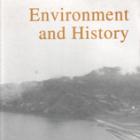Newell, Edmund, and Simon Watts. “The Environmental Impact of Industrialisation in South Wales in the Nineteenth Century: ‘Copper Smoke’ and the Llanelli Copper Company.” Environment and History 2, no. 2 (Oct., 1996): 309–36. doi:10.3197/096734096779522248. The development of industrial towns on the south-western side of the south Wales coalfield, such as Llanelli, Swansea, Neath and Port Talbot, was based to a large extent upon the growth of metal industries. This paper focuses on a major environmental problem associated with this development: that of ‘copper smoke’ produced by the region’s important copper smelting industry. The first part of the paper discusses the social, economic and legal history of the copper smoke problem, and the technology employed to control emissions. The second part deals with the chemical composition of copper smoke and estimates the output and dispersion of copper smoke and other metal fumes from the Llanelli Copper Company’s works in the 1860s using a Gaussian plume model. It is argued that the extent of long and short range deposition of sulphur and heavy metals from these works was significantly high and that the industry was therefore a major polluter, particularly when copper smelting was at its peak in the region in the mid- to late-nineteenth century. All rights reserved. © 1996 The White Horse Press
"The Environmental Impact of Industrialisation in South Wales in the Nineteenth Century: 'Copper Smoke' and the Llanelli Copper Company"
Newell, Edmund, and Simon Watts | from Multimedia Library Collection:
Environment and History (journal)


